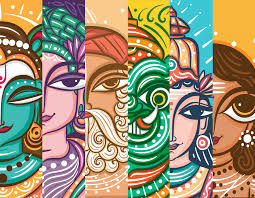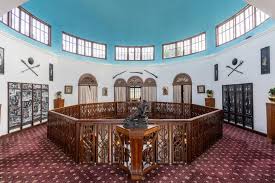
Menu

Bardhaman, a princely stronghold in Bengal, boasts a rich heritage not only in politics and tradition but also in art. Among its most enchanting yet lesser-known treasures are the murals found within its grand palaces and estates. These wall paintings, often hidden in aging halls and corridors, serve as visual narratives of the region’s royal history, mythological devotion, and evolving aesthetic sensibilities.
Murals in Bardhaman’s estates were more than just decoration—they were storytelling tools. Inspired by both indigenous techniques and the artistic tastes of the aristocracy, these paintings often depicted scenes from Hindu epics like the Ramayana and Mahabharata, alongside local folklore, hunting scenes, and royal portraits. Painted in earthy reds, yellows, and blues, these works brought life and movement to otherwise solemn stone walls.
The Bardhaman Rajbari (royal palace) was one of the key sites for such artistic expression. The murals here reflected a fusion of styles—classical Indian composition with elements of colonial influence. You could find a goddess floating on a lotus painted in the same hall as a British officer on horseback. This blend of themes reflected the hybrid identity of a kingdom negotiating its place between tradition and modernity.
Artists who created these murals were usually locally trained and worked in teams. They used natural pigments derived from minerals, clay, and plants, applying them with brushes made of bamboo and goat hair. Their technique emphasized strong outlines, flat color fills, and symbolic ornamentation—a style deeply rooted in the Bengal School of Art yet customized for large architectural spaces.
Over time, many of these murals suffered due to neglect, moisture, and structural decay. However, recent interest in cultural preservation has led to partial restorations, with some sections of the Rajbari being cleaned and studied by art historians and conservationists. Efforts are also underway to digitally archive the murals, capturing them before they fade completely.
The palace murals of Bardhaman are more than remnants of royal indulgence—they are windows into a layered cultural memory. They speak of devotion, power, creativity, and the human need to leave stories on walls. In their faded brilliance, they continue to whisper tales of a glorious past waiting to be rediscovered and reimagined.

@THE INDIAN ART COTTAGE
© The Indian Art Cottage | All Rights Reserved | 2025